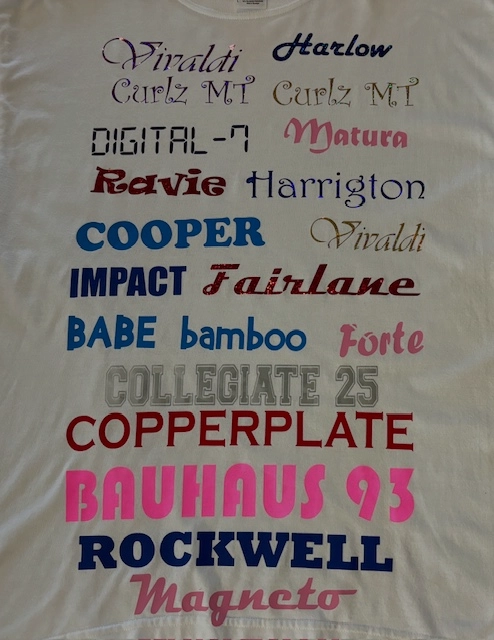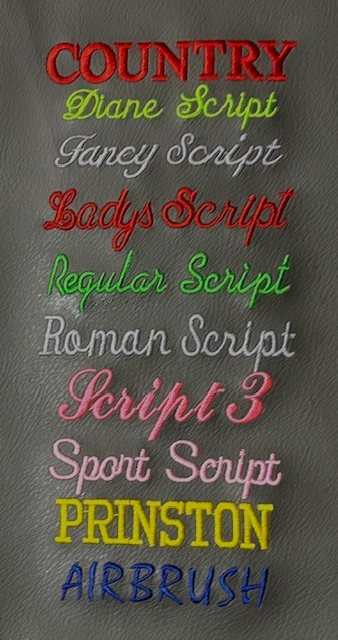Elegant Monogramming on Towels for a Touch of Luxury
Elegant Monogramming on Towels for a Touch of Luxury
Blog Article
The Art of Custom Embroidery: Unlocking the Secrets to Creating Distinct and Unforgettable Styles
The tricks to creating personalized embroidery designs that astound the eye and leave a long lasting impression lie in a fragile balance of strategy, imagination, and attention to information. As we dig into the globe of customized needlework, we discover the nuanced interplay in between thread option, stitch intricacy, and design customization that raises a plain garment to a work of art.
Choosing the Right Needlework Threads
When choosing needlework strings, what crucial variables should you consider to guarantee the most effective results for your customized styles? The selection of embroidery thread is vital in establishing the last outcome of your embroidered style. Among the key considerations is the material of the thread. Different materials such as cotton, polyester, rayon, and silk use differing levels of shine, durability, and texture. It is important to pick a string product that enhances the textile you are embroidering on and aligns with the preferred look of the style.
Thicker strings can include dimension and appearance to your layout, while finer threads are perfect for intricate information and small text. Furthermore, thinking about the color fastness and washability of the thread is critical to make certain that your customized layouts preserve their high quality and vibrancy over time.
Discovering Different Stitch Strategies
To dive into the realm of 'Exploring Various Stitch Strategies', one should comprehend the ins and outs and subtleties that each sewing approach gives the art of embroidery. Various stitch methods not only add visual rate of interest yet also add to the total appearance and dimension of the style. One prominent stitch strategy is the satin stitch, which involves carefully stuffed parallel stitches to create a smooth and shiny surface area, perfect for filling in shapes and producing vibrant lays out.
On the other hand, the backstitch is a flexible method often used for detailing and including great information. It entails sewing backward to create a solid line of embroidery. Furthermore, the French knot stitch includes a responsive aspect to layouts, excellent for creating distinctive accents like flower centers or decorative touches.
Exploring different stitch techniques allows embroiderers to play with light, shadow, and depth within their designs, elevating the visual appeal and artistic quality of their embroidery projects. By mastering numerous sewing approaches, one can open countless opportunities for developing one-of-a-kind and remarkable personalized needlework items.
Incorporating Personalized Style Components
Having discovered the ins and outs of different stitch strategies such as the satin stitch, backstitch, and French knot, the emphasis now changes in the direction of incorporating customized design elements in custom needlework projects. Individualized style elements play a critical function clothing tailor near me in making embroidery tasks genuinely unique and remarkable.
One more way to include customized design aspects is by including icons or themes that hold special definition to the recipient or show their interests and character. Including a preferred blossom, animal, or hobby-related sign can make the embroidery layout more significant and customized. Additionally, picking shades that reverberate with the recipient or line up with the intended motif can additionally boost the personalization of the embroidery task.
Grasping the Art of Shade Coordination

One key element of shade coordination is comprehending shade concept. This includes understanding just visit the site how different shades connect with each other, the emotions they share, and how they can be combined to produce aesthetically appealing designs. By applying shade concept concepts, embroiderers can create harmonious color schemes that boost the overall look of the style.
Furthermore, paying focus to contrast is essential in shade control. Making use of contrasting shades can help certain aspects of the style pop, enhance readability, and create a visually dynamic needlework item. By understanding the art of shade control, embroiderers can elevate their designs and create memorable pieces that resonate with clients and viewers alike.
Enhancing Texture With Advanced Embroidery Stitches

French knots, for instance, are ideal for including tiny, elevated dots to your design, simulating the appearance of beads or creating a distinctive surface area. Bullion knots, on the other hand, can be utilized to produce twisted, ropelike aspects that include a lavish feel to the embroidery. Seed stitching involves tiny, scattered stitches that can fill in locations with a polychromatic appearance, while turkey job develops cosy, dimensional accents evocative pet hair or vegetation. Trying out with these innovative needlework stitches enables you to push the limits of standard needlework and produce really distinct and visually appealing textures in your designs.
Conclusion
In conclusion, the art of custom needlework includes a mix of picking the best threads, exploring numerous stitch methods, integrating customized design components, grasping color sychronisation, and enhancing appearance with sophisticated stitches. By understanding and applying these essential components, embroiderers can produce unique and unforgettable designs that display their creativity and ability. Embroidery lovers can unlock the secrets to developing stunning and custom pieces that stand out and leave a long lasting impression.
Report this page